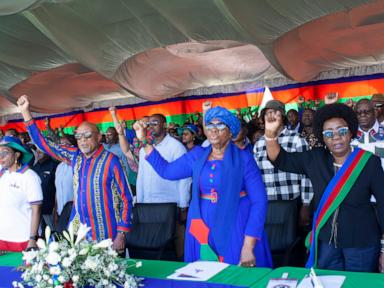ARTICLE AD BOX
A REMOTE island in the Southern Indian Ocean has been overrun by vicious zombie mice who come out in their droves at night and eat birds alive.
Millions of rodents are set to be exterminated when six helicopters swarm Marion Island to drop 550 tonnes of poison on their heads.
 AP
AP AP
AP
Albatross, a bird that calls Marion Island home, are regularly tortured and killed by the vicious mice.
They move in small packs under the cover of darkness and swarm birds nests where even baby chicks are sleeping.
After selecting their victims, the mice perch on the birds heads to gnaw away at their flesh, scalping them alive.
The abused birds eventually grow weak and tired from no sleep.
They often get sick, likely developing infections from the gruesome attacks, and die.
Disturbing night vision footage taken on the island shows the zombie mice in action.
An image of one mice shows it perched on the head of a bird frozen completely still in terror, chewing away at the animal’s scalp.
The mice will regularly attack baby chicks from the dozens of different bird varieties on the island.
Now, after years of torment on the island, the South African government and Angela’s organisation have devised a plan: The Mouse-Free Marion project.
Using military precision and an enormous effort with a budget of £19.6million, they hope to eradicate the mice entirely.
And Marion, halfway between South Africa and Antarctica, will the biggest island yet where such a manoeuvre has been attempted.
As many as six choppers, flown by highly skilled pilots will drop 550 tonnes of poisoned bait for the mice in continuous shifts until the entire island is covered.
Andrea Angel, albatross task force leader from Birdlife South Africa, told nine.com.au: “I don’t think I’ve ever seen anything so gruesome.
“They’re scalped. The mice are constantly on the birds at night – on their heads, in their eyes and crawling all over them.
“The chicks can barely move. They’ve got these wounds that are festering and open on their abdomen.
“It is harrowing to watch and you know it is going to die. It is heartbreaking.”
Angel is one of a group of brave scientists who live and research on the island for sometimes up to a year at a time, and who dubbed them “zombie mice”.
No other humans live amongst the mutated mice.
She can tell which albatross have been attacked overnight before she even gets close to them.
While most are active, “flapping their wings” or “practising to fly”, those who’ve been targeted are “just sitting there, doing nothing”.
Angel says by this point they’re so exhausted from trying to escape the mice they run out of energy and give up.
Once the birds eventually die, the mice return to feed on their corpses.
The mice were accidentally brought to Marion in the early 1800s, arriving via ship with seal hunters.
While the creatures on Marion Island used to coexist quite peacefully, as temperatures warmed in the 2000s more mice survived the winter.
They multiplied faster and faster, and became starving in their bigger numbers during the winder.
In their desperation for food the animals started to attack both adult and baby albatross as they rested.
One expert involved in the project says the specialist team will only have “one chance” to get rid of the zombie mice.
If even a tiny portion of the island is missed in the bait drop and just one pregnant mice survives, the colony could be regenerated.
The drop must also happen during winter when they are at their most active and hunting for food.
The project will cost a fortune – even the bait alone costs millions.
And flying the choppers during the winter this far south comes with its own risk for those involved.
Nini van der Merwe, spokesperson for BirdLife South Africa (BLSA), said: “The majority of mice attacks happen in winter time, because of food scarcity on the island.
“And that is also why the eradication must happen at winter so the mice will be more likely to go for the bait.
“We really need the weather to be on our side.
“You have very small windows when conditions are optimal for flying and distributing the bait.”
“You get one chance. There is no do over. It’s too much money and it takes too much time.”
Speaking about the gentle albatross who call Marion home, Angel said it is clear how devastated the birds are when the zombie mice kill their young.
“When you see a chick die because of these mice attacks … what these parents go through, it drives you to tears.
“You can see the despair, the care, the love they feel for these chicks.”
The island is a rare undisturbed home for the majestic birds, but also houses 29 other species of bird.
Macaroni penguins and seals also call the rare and diverse island home.
The mice feed on other seabirds as well as albatross, and invertebrates creatures, disrupting the islands’ entire eco-system.
Scientists are planning to execute the mammoth Mouse-Free Marion Project in 2027.
 Mice are wreaking havoc on the wildlife that call Marion Island home
Mice are wreaking havoc on the wildlife that call Marion Island home NASA
NASA The island is home to dozens of different animals, birds, mice, penguin, seals and moreRex
The island is home to dozens of different animals, birds, mice, penguin, seals and moreRex Kieran O'Donovan
Kieran O'Donovan
 AP
AP.png)
 8 months ago
2
8 months ago
2








 English (US)
English (US)